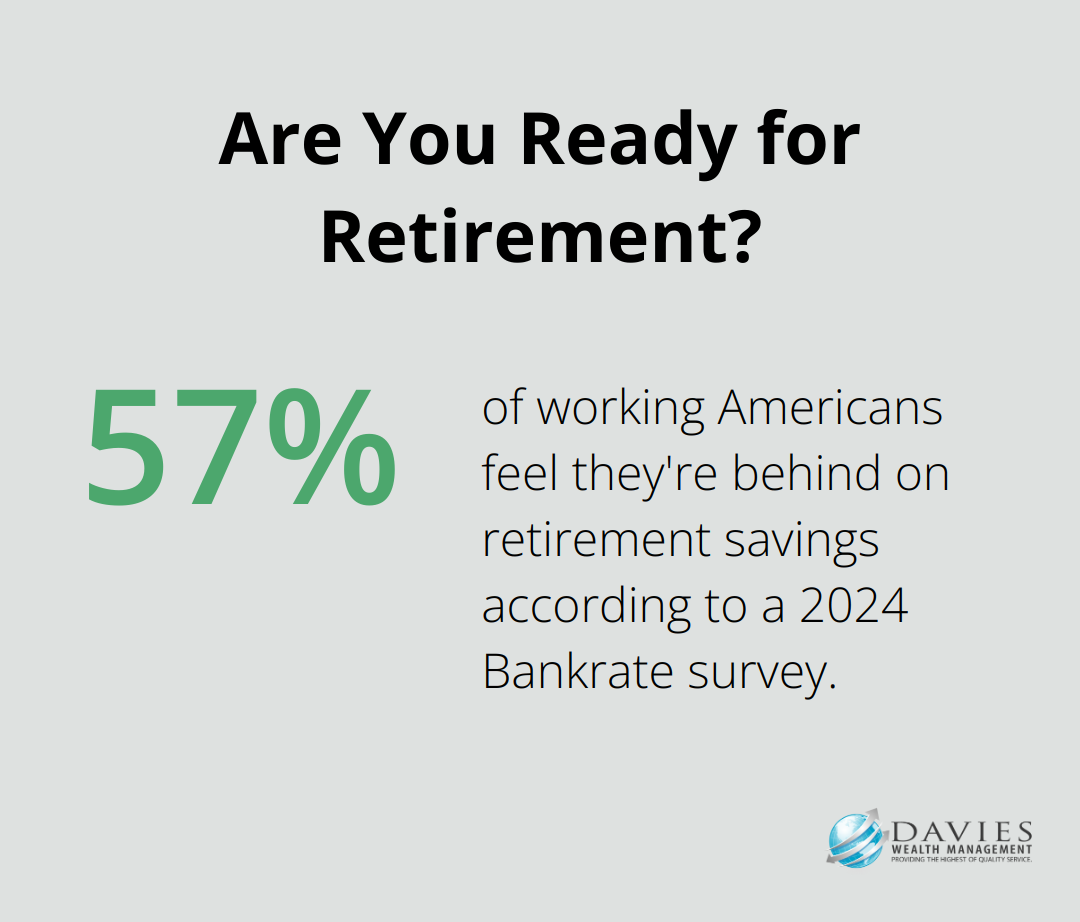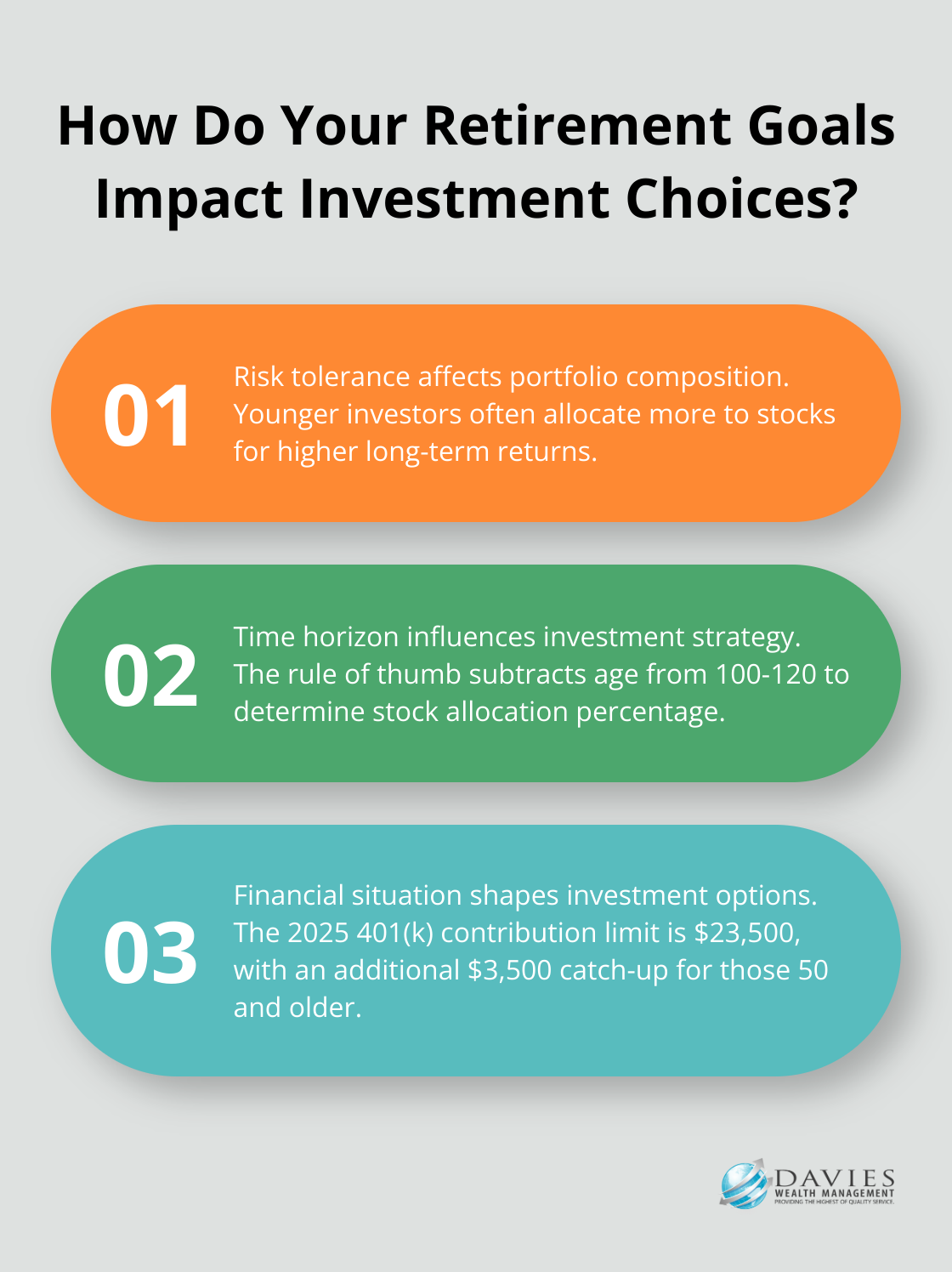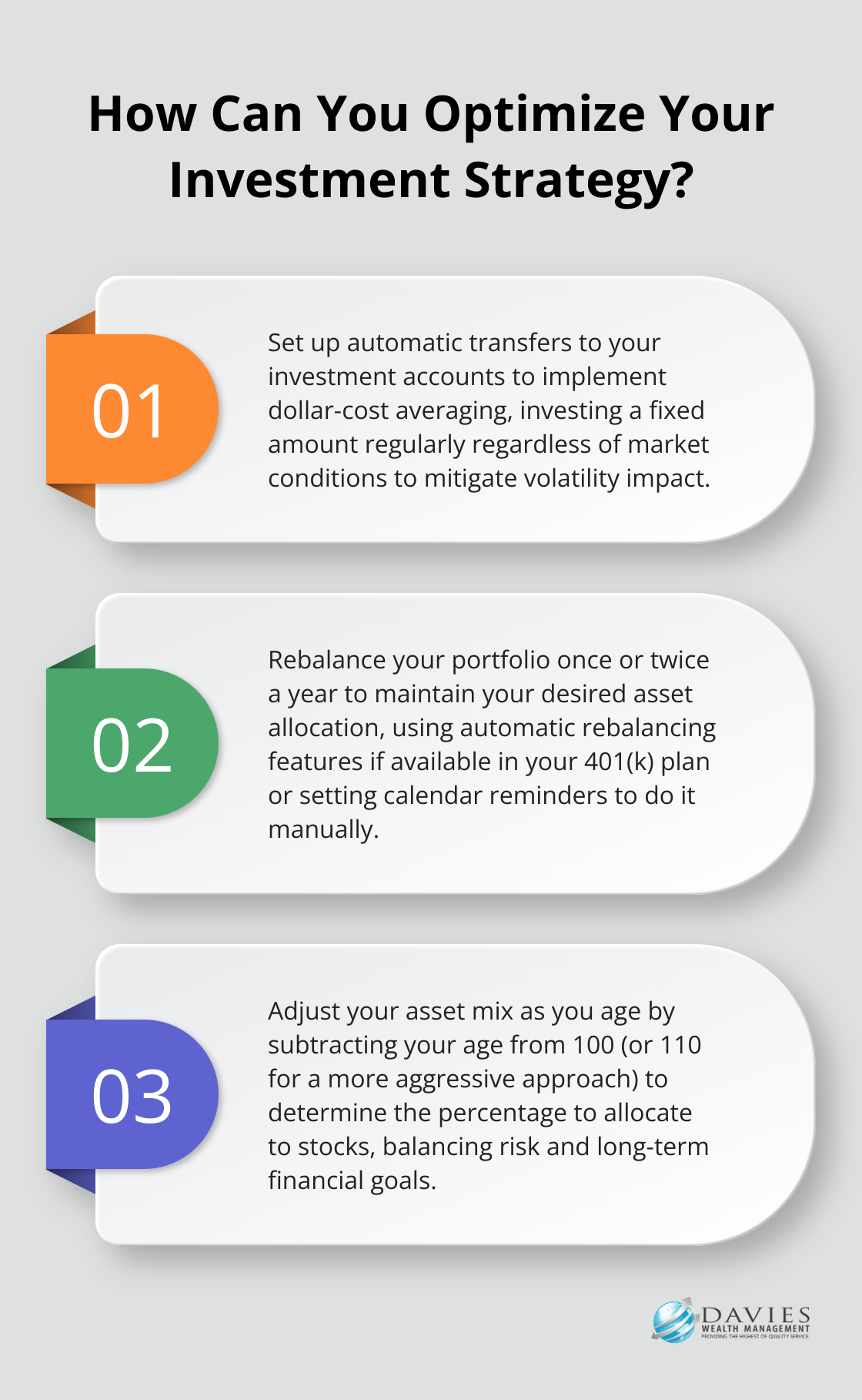Choosing the right retirement investment options can be overwhelming, but it’s a critical step in securing your financial future. At Davies Wealth Management, we understand the importance of making informed decisions when it comes to your retirement savings.
Our retirement investment advice is designed to help you navigate the complex landscape of investment options and strategies. This guide will break down the key factors to consider and provide practical insights to optimize your retirement portfolio.
What Are Your Retirement Investment Options?
Individual Retirement Accounts (IRAs)
IRAs offer tax advantages for retirement planning. They allow you to make tax-deferred investments to provide financial security when you retire. Traditional IRAs allow tax-deductible contributions, with taxes paid upon withdrawal. Roth IRAs are funded with after-tax dollars but offer tax-free withdrawals in retirement.
Employer-Sponsored Retirement Plans
401(k) plans are popular employer-sponsored options. These allow you to contribute pre-tax dollars, often with employer matching. As of 2025, the employee contribution limit for 401(k) plans is $23,500, with a combined employee and employer contribution limit of $70,000. Public school employees or those working for certain non-profits might have access to a 403(b) plan, which functions similarly to a 401(k).
Investment Funds
Mutual funds and Exchange-Traded Funds (ETFs) offer diversification by pooling money from multiple investors to purchase a variety of securities. Mutual funds are actively managed and priced once daily, while ETFs are often passively managed and trade like stocks throughout the day. Both options provide access to a broad range of assets, which helps to spread risk across different sectors and companies.
Individual Stocks and Bonds
For those comfortable with more hands-on investing, individual stocks and bonds are options to consider. Stocks represent ownership in a company and can offer growth potential, while bonds are loans to governments or corporations that provide regular interest payments. A 2024 Bankrate survey revealed that 57% of working Americans feel they’re behind on retirement savings, which underscores the importance of starting early and choosing the right mix of investments.
Real Estate Investment Trusts (REITs)
REITs allow you to invest in real estate without directly owning property. They typically offer higher dividend yields compared to many stocks, providing a steady income stream for retirees. However, it’s important to note that REITs can be more volatile than other fixed-income investments.

Understanding these options is just the first step in creating a robust retirement investment strategy. The next crucial phase involves considering various factors that will influence your investment decisions. Let’s explore these factors in detail to help you make informed choices for your retirement portfolio.
What Shapes Your Retirement Investment Choices?
Assessing Your Risk Appetite and Investment Timeline
Your risk tolerance and time horizon fundamentally shape your investment strategy. Investors with retirement decades away often opt for a more aggressive portfolio with a higher allocation to stocks. This approach maximizes the potential for higher long-term returns, despite short-term market fluctuations. Vanguard models are strategies that help investors choose how much to invest in stocks or bonds based on their goals and risk tolerance.

As retirement approaches, a more conservative approach becomes necessary. This typically involves a gradual shift towards bonds and other fixed-income securities to preserve capital. The classic rule of thumb subtracts your age from 100 to determine your stock allocation percentage. However, with increasing life expectancies, some financial advisors now recommend using 110 or even 120 as the starting point.
Aligning Investments with Your Financial Reality
Your current financial situation (including income, expenses, and existing savings) plays a pivotal role in determining suitable investment options. High-income earners often benefit from maximizing tax-advantaged accounts like 401(k)s and IRAs before exploring taxable investment accounts. For 2025, the IRS has set the 401(k) contribution limit at $23,500, with an additional $3,500 catch-up contribution for those 50 and older in most SIMPLE plans.
Individuals with lower incomes or significant expenses should prioritize building an emergency fund before aggressively investing for retirement. A general guideline suggests having 3-6 months of living expenses saved before increasing retirement contributions.
Tailoring Investments to Your Retirement Vision
Your retirement goals and lifestyle expectations heavily influence your investment choices. If you envision a lavish retirement with frequent travel, you’ll need a more robust investment strategy compared to someone planning a modest lifestyle. Investopedia reports that the average retired household spends around $5,000 per month, with housing, healthcare, and food being the largest expense categories.
Retirement calculators help estimate your needed savings based on your desired lifestyle. Many experts suggest replacing 70-80% of your pre-retirement income, but this can vary widely based on individual circumstances.
Considering Tax Implications
The tax implications of your investment choices can significantly impact your retirement savings. Traditional IRAs and 401(k)s offer tax-deferred growth, meaning you pay taxes on withdrawals in retirement. Roth accounts, on the other hand, provide tax-free withdrawals in retirement but are funded with after-tax dollars. Your current tax bracket and expectations for future tax rates should guide your decision between these options.
Embracing Diversification
Diversification remains a cornerstone of sound retirement investing. By spreading investments across various asset classes (stocks, bonds, real estate), sectors, and geographic regions, you can mitigate risk and potentially enhance returns. Exchange-Traded Funds (ETFs) and mutual funds offer an easy way to achieve diversification, even with a relatively small investment.
As you consider these factors, remember that professional guidance can prove invaluable. Financial advisors specialize in creating personalized retirement strategies that align with your unique goals and circumstances. Whether you’re a professional athlete with a short career span or a business owner looking to secure your financial future, expert advice can help you navigate the complexities of retirement planning and investment selection.
How to Optimize Your Retirement Portfolio
Optimizing your retirement portfolio requires careful attention and strategic adjustments. Here’s how you can fine-tune your retirement investments for maximum effectiveness.
Adjust Your Asset Mix as You Age
One of the most important aspects of portfolio optimization is asset allocation based on your age and risk tolerance. The classic recommendation for asset allocation is to subtract your age from 100 to find out how much you should allocate towards stocks. However, this is just a guideline. Your personal risk tolerance plays a significant role. Some investors might prefer a more aggressive allocation, while others opt for a conservative approach. The key is to find a balance that allows you to sleep at night while still meeting your long-term financial goals.
Rebalance Regularly to Stay on Track
Markets constantly fluctuate, which can throw your carefully planned asset allocation out of balance. Regular rebalancing (typically once or twice a year) helps maintain your desired risk level. Rebalancing involves adding or selling assets to your investment portfolio to diversify and find the right balance between risk and reward.

Many 401(k) plans offer automatic rebalancing features. If yours doesn’t, set a calendar reminder to review and rebalance your portfolio. This disciplined approach helps you avoid emotional decision-making based on market highs or lows.
Use Dollar-Cost Averaging
Dollar-cost averaging is a powerful strategy that involves investing a fixed amount regularly, regardless of market conditions. This approach can help mitigate the impact of market volatility on your portfolio. It establishes good investing habits, keeps you open to opportunities, and helps avoid the risks associated with market timing.
Most 401(k) contributions naturally follow this pattern, but you can apply this strategy to other investment accounts as well. Set up automatic transfers to your investment accounts to make this process effortless.
Seek Professional Guidance
While you can implement these strategies on your own, seeking professional advice can provide valuable insights and potentially improve your outcomes. A study found that working with a financial advisor can potentially add about 3% in net returns annually through a combination of portfolio construction, behavioral coaching, and other factors.
Davies Wealth Management specializes in creating personalized retirement strategies that align with your unique goals and circumstances. Our expertise is particularly valuable for those with complex financial situations, such as professional athletes or business owners, who may need more sophisticated retirement planning strategies.
Stay Informed, But Don’t Overreact
Staying informed about market trends and economic conditions is important, but it’s equally important not to overreact to short-term market movements. A study found that the average investor significantly underperforms the market due to poor timing decisions, often driven by emotional reactions to market news.
Instead of making knee-jerk reactions to market headlines, focus on long-term trends and how they align with your overall retirement strategy. If you’re unsure about how economic changes might impact your portfolio, consult with a financial advisor who can provide objective guidance.
Final Thoughts
Choosing the right retirement investment options requires careful evaluation of your unique circumstances. Your risk tolerance, time horizon, financial situation, and retirement goals shape your investment strategy. We recommend you create a well-balanced portfolio that aligns with your needs and aspirations.

Optimizing your retirement portfolio involves regular rebalancing, asset allocation adjustments, and strategies like dollar-cost averaging. You should stay informed about market trends without overreacting to short-term fluctuations. The journey to a secure retirement starts with taking action today, allowing you to benefit from compound interest and recover from potential market downturns.
At Davies Wealth Management, we offer personalized retirement investment advice tailored to your specific situation. Our expertise extends to serving professional athletes, business owners, and individuals seeking comprehensive financial planning. We help you navigate the complexities of retirement planning and investment selection, ensuring you can build, protect, and transfer your wealth with confidence.



Leave a Reply